Zachary Morin
Advisor: Mimi Locher
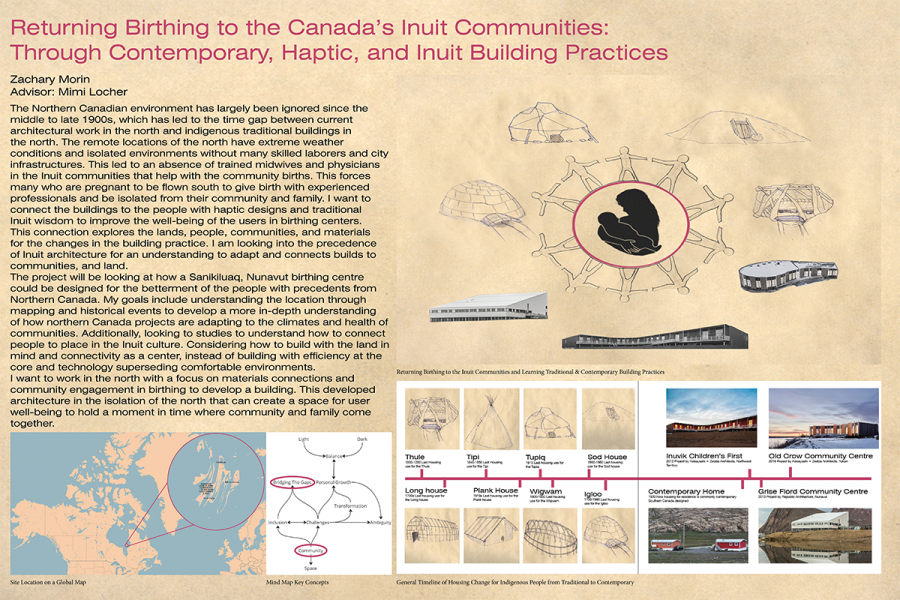
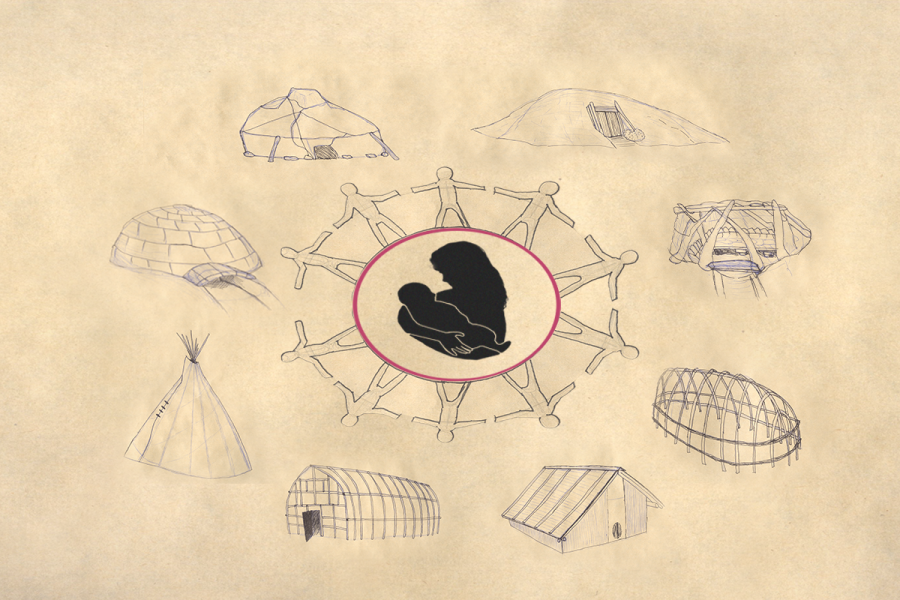
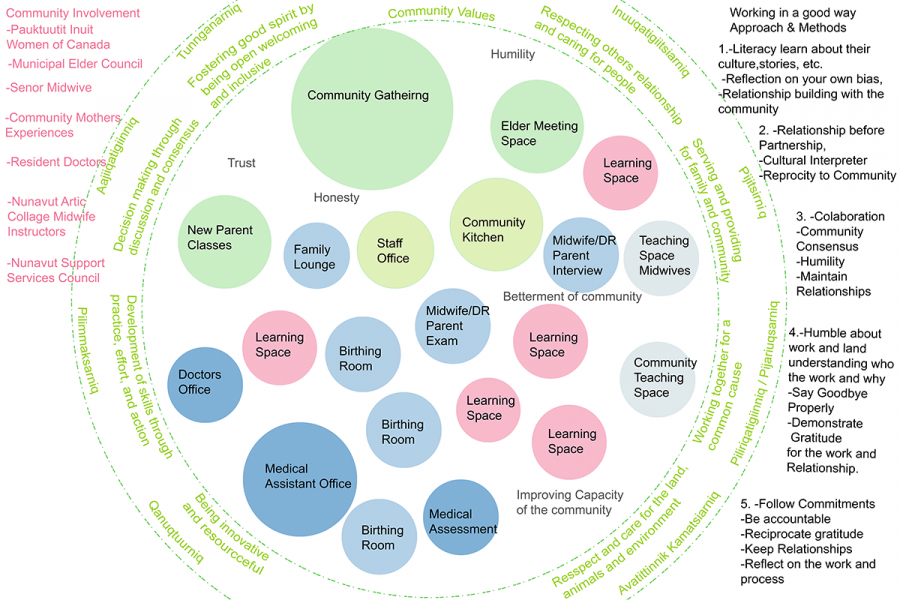
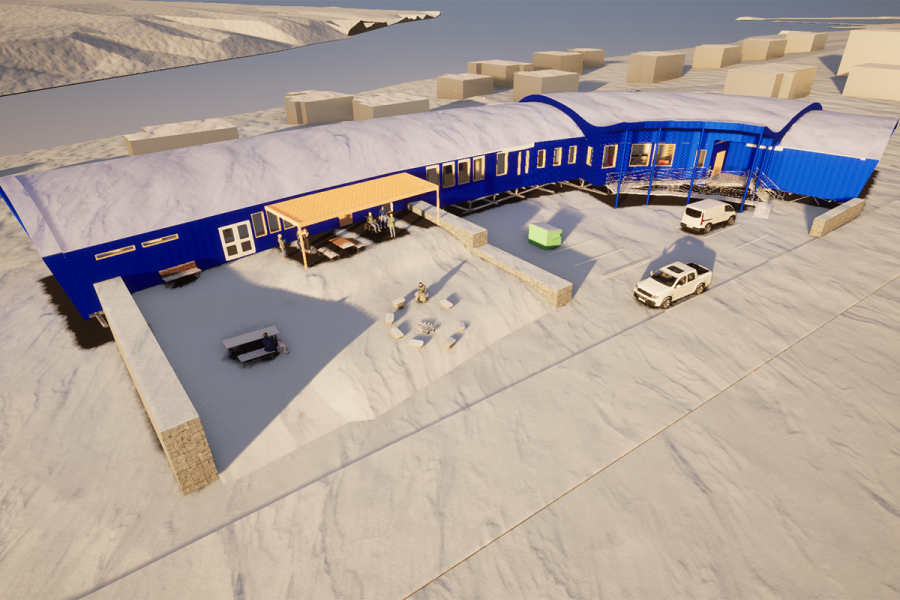
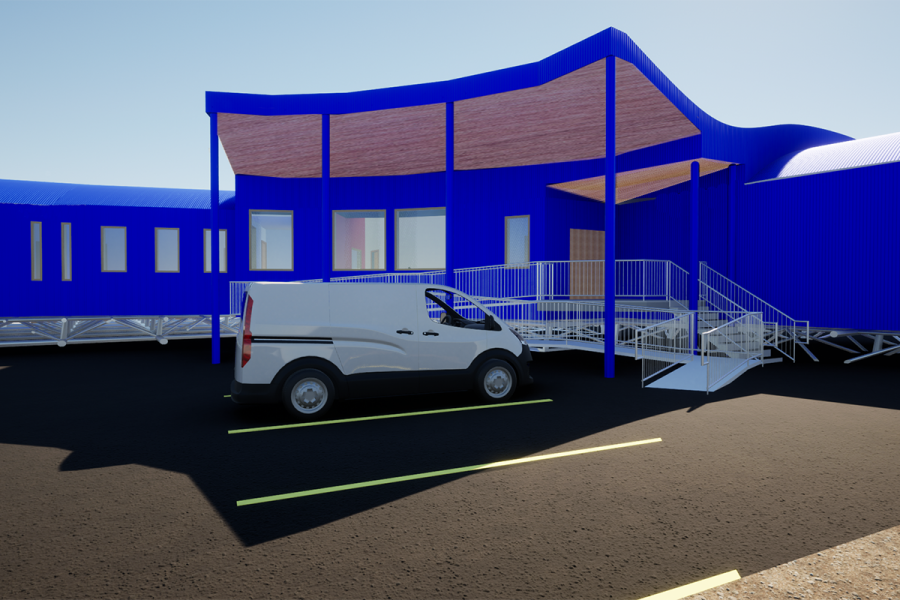
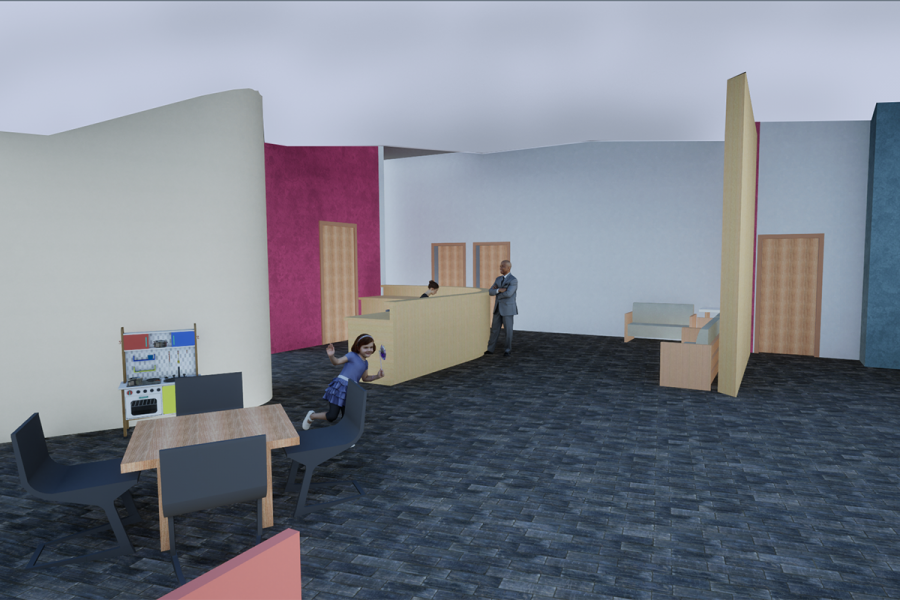
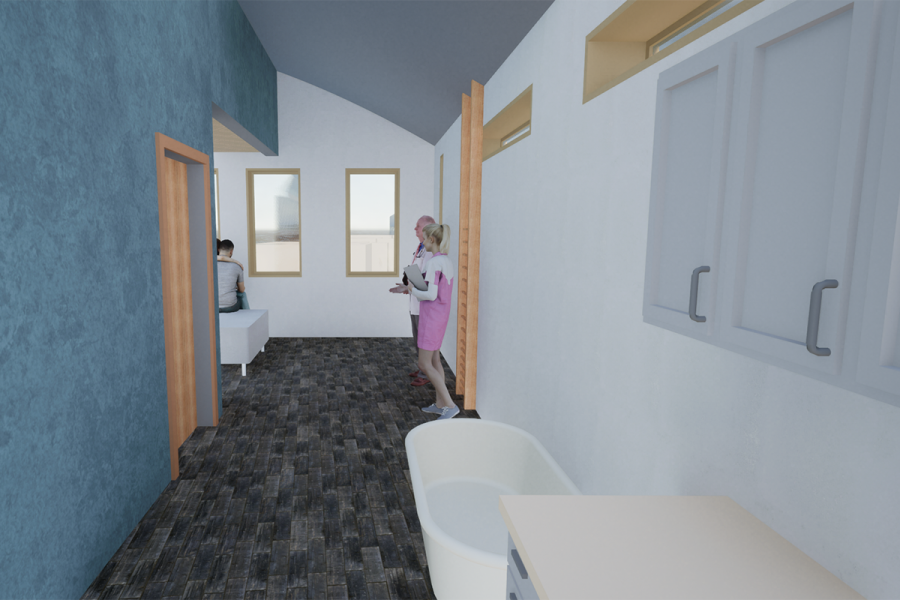
Returning Birthing to the Canada’s Inuit Communities: Through Contemporary, Haptic, and Inuit Building Practices
The Northern Canadian environment has largely been ignored since the middle to late 1900s, which has led to the time gap between current architectural work in the north and indigenous traditional buildings in the north. The remote locations of the north have extreme weather conditions and isolated environments without a variety of skilled laborers and city infrastructures. This led to an absence of trained midwives and physicians in the Inuit communities that help with the community births. This forces many who are pregnant to be flown south to give birth with experienced professionals and be isolated from their community and family. I want to connect the buildings to the people with haptic designs and traditional Inuit wisdom to improve the well-being of the users in birthing centers. This connection explores the lands, people, communities, and materials for the changes in the building practice. I am looking into the precedence of Inuit architecture for an understanding to adapt and connect builds to communities, and land.
The project will be proposing a schematic of how a Sanikiluaq, Nunavut birthing center could be designed for the betterment of the people using precedents from Northern Canada. My goals include understanding the location through mapping and historical events to develop a more in-depth understanding of how Northern Canada projects are adapting to the climates and health of communities. Additionally, looking at studies to understand how researchers have connected people to places within the context of the Inuit culture. Considering, how to build with the land in mind and connectivity as the center of the building, with aspects of a comfortable environment instead of solely focusing on building efficiency due to location.
I want to work in the north with a focus on materials connections and community engagement in birthing to develop a building. This developing architecture for the isolation of the north can create a space for user well-being to hold a moment in time where community and family come together.
